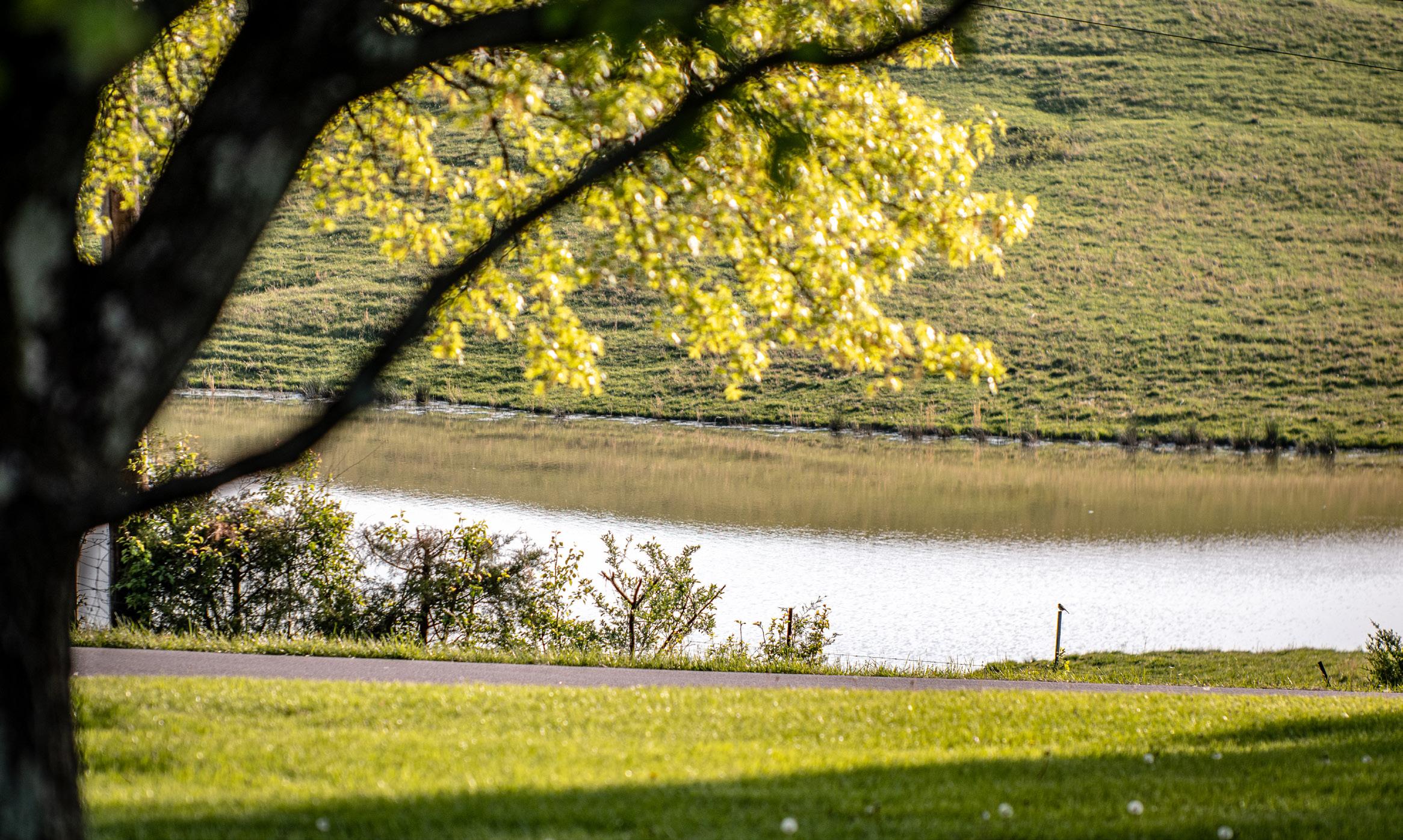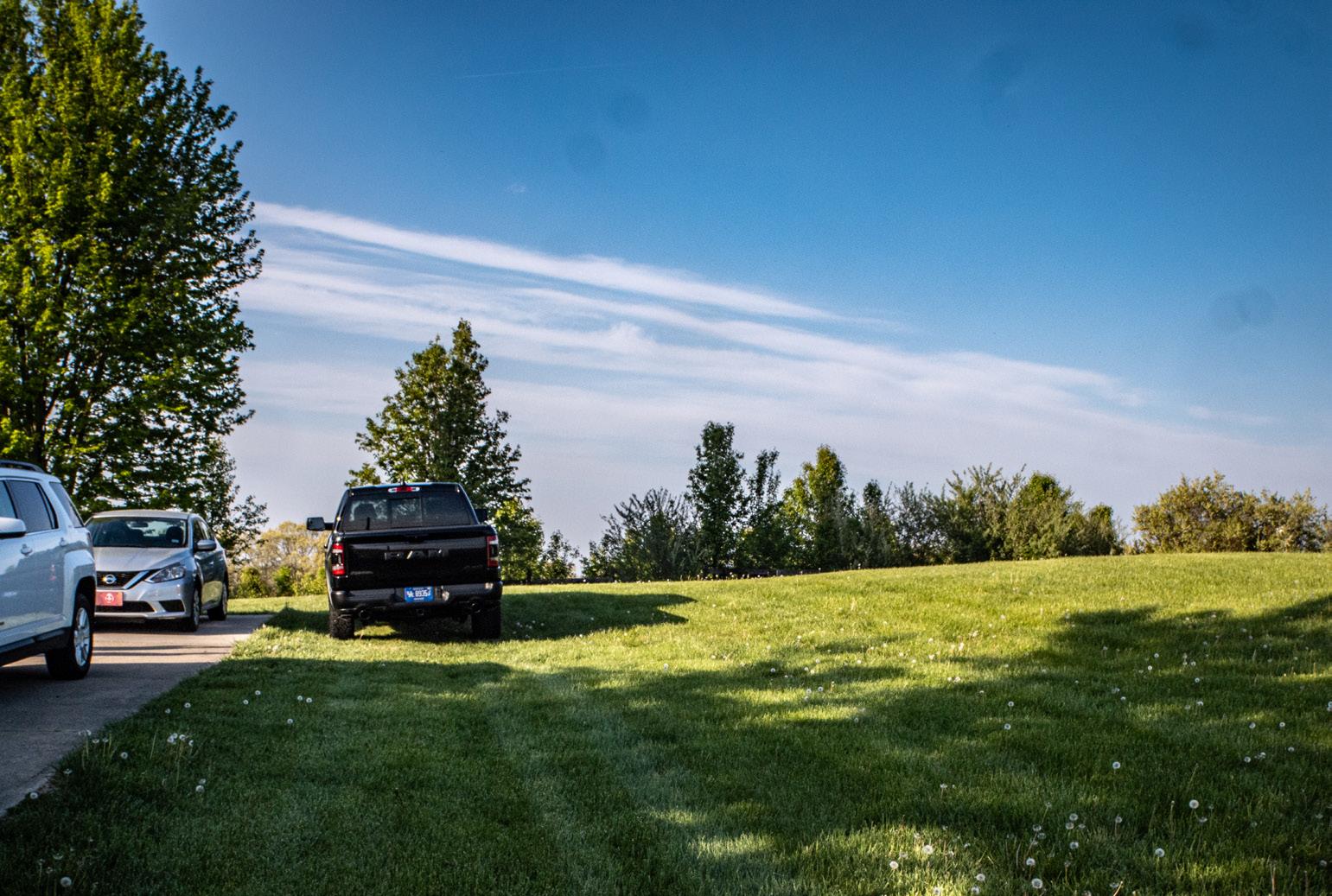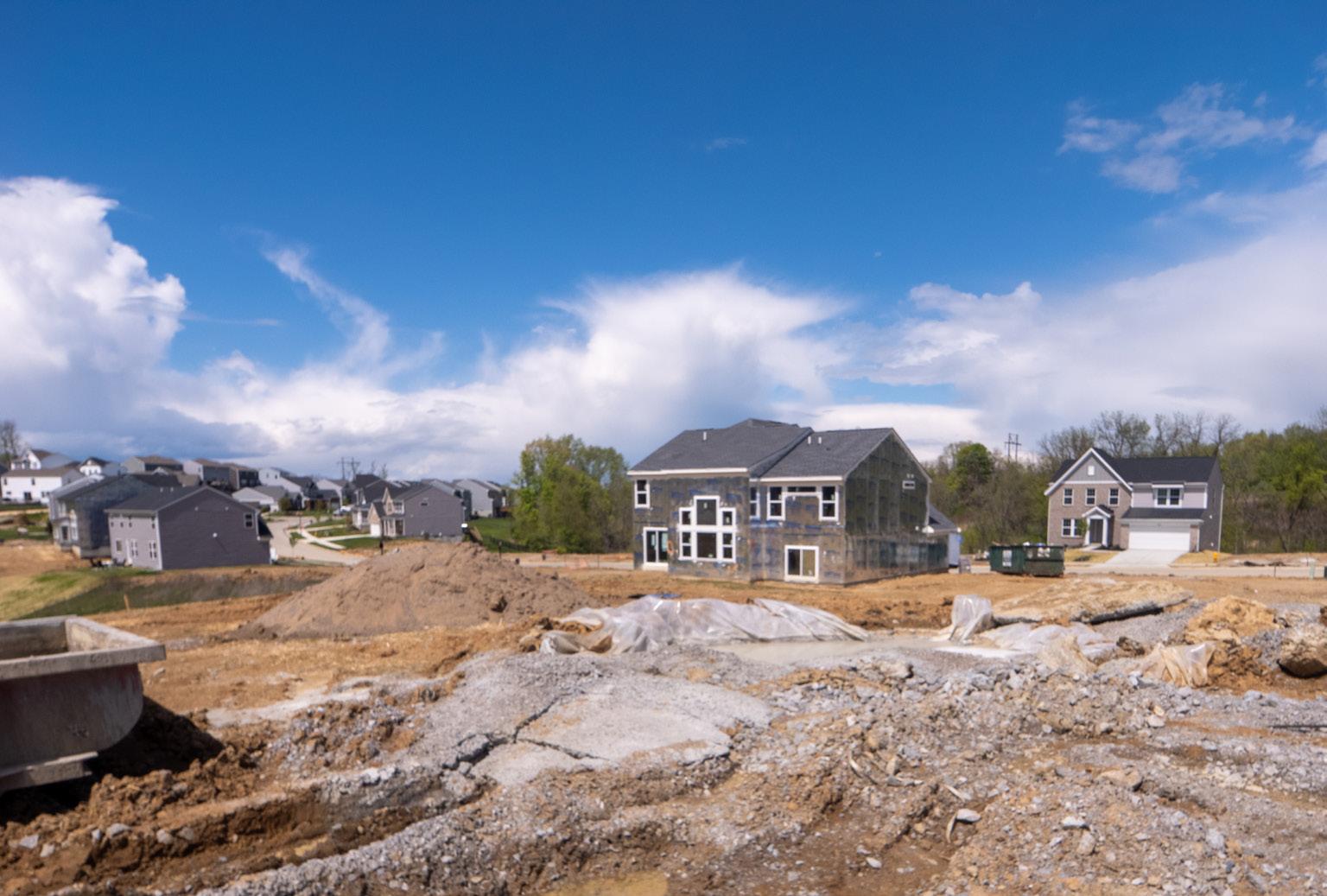
7 minute read
BY HALEY PARNELL | LINK nky REPORTER
No part of this publication may be used without permission of the publisher. Every effort is made to avoid errors, misspellings, and omissions. If, however, an error comes to your attention, please let us know and accept our sincere apologies in advance.
The front yard view from a Licking Pike resident. Photo by James Robertson | LINK nky contributor hen Jen Armstrong lived in Crestview, the houses were close enough that she could smell her neighbor’s cigarette smoke waft through her open window.ti from her current home in unincorporated Campbell County. But Armstrong said those are sacrifices she is willing to make.
The Armstrong family house on “point-something of an acre” sat about 15 feet from their neighbors’ home in Campbell County. Though Armstrong said her former neighbor was pleasant to live near, the proximity that allowed her to hear a toilet flush from the next house over was not.
“Her bathroom was right across from my kitchen,” Armstrong said. “The way the bathrooms were built was that the windows overlooked the tub, and I heard her flush the toilet. And I was like, ‘Oh my God, did I just hear her flush the toilet?’ I went to my husband, Dave, and I was like, ‘All right, let’s start looking.’ “
There is more land to maintain and a longer work commute to downtown Cincinna-
Armstrong and others who prefer rural living cite benefits including space to sprawl, wildlife – and no toilet-flushing noises –when detailing their decision to live away from the pace of the city. But as Northern Kentucky’s population increases and expands south into more rural areas, tension has developed between those moving into that open space and those who would prefer it to stay just that – open.
Residents of Kenton County face a similar situation.
“The suburban and urban areas are continually growing, and in Kenton County, the way to grow is by moving further south,” said Andy Videkovich, planning manager at Planning and Development Services of Kenton County.
The trend is happening regionwide. Campbell County saw a 3% increase in population between 2010 and 2020, according to economic development company BE NKY. Kenton County’s population, meanwhile, increased by almost 6% and Boone County’s by just under 15%.
The 41001 ZIP code where Armstrong lives in Campbell County saw a 17.6% growth in population over the last 10 years.
“People that live out here choose to live 20 minutes from Kroger, 10 minutes from Walmart,” Armstrong said. “And even though it’s a farther drive, the people that chose to live out here, it’s for the same reasons. It’s for peace and quiet. They like the natural scenery. When I lived in Crestview, I never saw any wild animals.”
Her move to southern Campbell County around 2009 helped Armstrong escape
Continues on page 4
that suburban lifestyle. But little did she know that years later, beginning in 2022, the peace and quiet she had found was at risk.
After a local family sold the land that surrounds three sides of Armstrong’s property, Maronda Homes proposed a development that would put 93 homes on approximately 18 acres in what is referred to as a cluster overlay design on 47 total acres of land. The remaining acreage would be used for green and community space, developers said.
Members of the community are involved in a lawsuit aimed at stopping the development, and attorneys recently filed a motion to transfer the case to the Kentucky Supreme Court.
Armstrong said if the subdivision were built, she would be able to see the rows of houses from her backyard. Additionally, a road connecting the subdivision to S Licking Pike would run roughly 10 feet from her property line. Though Armstrong is opposed to that development, she said she isn’t opposed to all development; it’s the density of the cluster overlay design that she is against.
“The cluster to have these property lines from house to house from what’s being proposed in my neighborhood are going to be 10 feet apart,” Armstrong said. “And that’s fine if you’re in city limits, but again, you’re out here in the county, and I think it’s just too much.”
Armstrong’s neighbors to the left are Steve and Angela Siry, who have lived on S Licking Pike for 20 years. The Sirys told LINK nky last year that they live there for a country lifestyle and enjoy being surrounded by rolling hills and cattle. If the development were to happen, they said, they fear losing their peace and quiet. Like Armstrong, they cite the density of the proposed development.
“We did figure eventually, someday, we’re going to lose our beautiful view out the front, with the cattle and rolling hills,” Steve Siry said. “But, 1-acre, 2-acre, 5-acre lots would be a lot better to look at than houses sitting on top of each other.”

But when it comes to rural living, “expectations and realities are two different things,” said Brian Miller, executive vice president of the Building Industry Association of Northern Kentucky. Property rights stop at your property line.

Miller said a conservation development, or cluster development, is an innovative option that allows for closer homes but more overall green space. But such developments can be jarring to residents.
“Northern Kentuckians, God bless us, we’re great people, but we just don’t believe in anything that we’ve never seen before until we’ve experienced it,” he said.
Though developments like the proposed Maronda Homes subdivision are one example of a cluster development, some are on a much larger scale, Miller said. They would be akin to building a new Covington out in the suburbs. Unlike a typical development that only features houses, cluster developments could have their own park spaces, farmers markets, fire department and libraries.
Cluster developments are largely similar to traditional developments, he said, but there are denser parts of the property than in some other developments.
“They’re really not a whole lot different than what a traditional development would end up being,” Miller said. “It just happens to be that they’re set off in little plots. You’re really still taking the same amount of land that you had before, but if you go with a higher-intensity, mixed-use development, it solves a lot of issues. One, you’re peeling some people away that would normally gravitate toward rural areas.”
Ideally, those types of developments would be built in the suburbs, where the infrastructure would support them, Miller said. However, topography and lack of utilities in an area wouldn’t necessarily prevent it from ever being developed. He said this type of development wouldn’t stop people from moving to a rural area but would slow it down.
“Somebody’s going to move there,” Miller said. At the end of the day, he said, it’s all about supply and demand.
“What we see is an opportunity to bring new forms of development to the supply chain of shelter,” he said. “That may mean over and above what we’re normally used to seeing – more individuals in a particular square footage or acreage than what you’ve traditionally seen available.”

He said this different type of development pattern gives people another living option beyond urban, suburban and rural. But it is not a cheap alternative.
“It’s actually very expensive because you’re giving up a number of units that you could put on the market,” Miller said. “You’re going to take a lot of that land off the market. And the trade-off is that you’re able to build more homes into a smaller area kind of clustered.”
He said there isn’t yet a good example of this type of development in Northern Kentucky. The areas in the region where Miller thinks it could work are along Pleasant Valley Road in Boone County, in Independence and in Taylor Mill.
As the region grows, where do people live? ‘That’s the struggle there’
Population growth has occurred primarily in the southern portions of the region in the last 10 years, said BE NKY Research Director David McAleese. said the development company seeks land and new community opportunities based on proximity to good schools and other conveniences.
“When it comes to local housing availability, Northern Kentucky has seen historically low inventory levels of existing homes on the market for the last several years,” he said. “New home construction has helped fill that need.

“To create a stable market overall, it will really take housing options at all levels, ranging from rentals to condominiums to single-family homes. Some neighborhoods in rural areas may satisfy a small percentage of interested buyers, but it isn’t going to be the primary solution to affordability.”
A new development called the Downs of Nicholson, located at the northeastern intersection of Taylor Mill Road and Madison Pike, is on the border of Independence and unincorporated Kenton County.
The city of Independence and the county agreed that any development in that area had to serve as a transition between the suburban and rural areas, Videkovich said. The Downs of Nicholson will be mixed-use with residential and commercial components, he said, and the architectural plans call for keeping a farmlike or barnlike feel to help blend in with the area.
Even with strategic plans to maintain the area’s integrity, Independence City Council member Greg Steffen has expressed his resistance to the project and was the only “no” vote at the council meeting on March 6, where the plans were approved.
“This kind of high-density residential development is the kind of thing we really need to avoid,” Steffen argued previously at a Feb. 6 council meeting. “I’m all in favor of the commercial side of it because it might be a good feature for the city.”
Steffen also had other concerns.
“It’s the type of thing we used to be against, and now it seems to be common to add more and more apartments, as I’ve seen all around the city. (This) increases our traffic, our crowding in stores and schools, which I know are outside of our purview, but it has that effect,” he said.
Steffen said Independence had annexed the land to prevent Covington from pushing farther south into undeveloped rural areas. Now, he said, Independence appeared to be doing the same thing the annexation was meant to prevent.
Videkovich said that sort of conflict has been an ongoing concern.
“Where the city meets the country, there is that fringe,” he said. “It’s been ongoing for the 18 years that I’ve been here.”
Residents of rural areas typically say they don’t want development because of traffic generation, concerns about the size and character of the development, and light pollution, Videkovich said.
There are also logistical explanations for why rural areas have less progress than suburban and urban areas, according to planning managers in Northern Kentucky. The Urban Service Boundary, or what Videkovich calls “focus areas,” limits the extension of public services like water and sewer.
“That’s basically the line where the infrastructure can support higher-density residential development,” he said. “So that’s going to limit how much you can really do out there.”
Videkovich also said the road infrastructure in rural areas needs to be built to withstand the traffic that comes with increased development.
Residents of southern Kenton County created the South Kenton County Citizens group, which he said acts as a liaison beContinues on page 6









